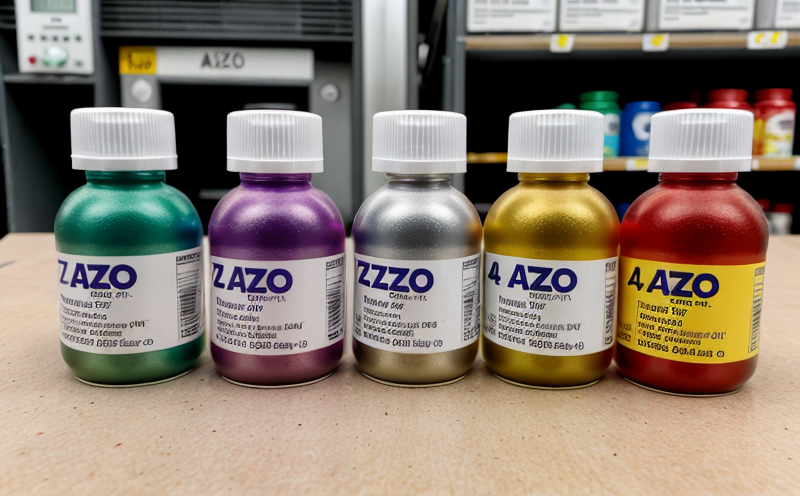ISO 21084 Determination of lead content in textile materials
The determination of lead content in textile materials is a critical aspect of ensuring product safety and compliance with international standards. ISO 21084 provides a robust framework for quantifying the presence of lead, which can be hazardous if present above certain levels. This service focuses on providing accurate and reliable testing solutions as per this standard.
Lead contamination in textiles is often unintentional but can arise from several sources including pigments, printing inks, and certain dyes. The primary concern with lead content in textiles is its potential to leach into the environment or directly onto skin during wear. Lead exposure has been linked to various health issues such as kidney damage, high blood pressure, and neurological disorders.
The ISO 21084 standard specifies a methodology for the determination of lead in textile materials using atomic absorption spectrophotometry (AAS). This technique measures the absorbance of light by free atoms in the gaseous phase. The method is particularly suitable for detecting trace elements like lead, which can be present at very low concentrations.
The procedure outlined in ISO 21084 involves several steps that are crucial for obtaining accurate results:
- Sample Preparation: The textile samples must be prepared according to the standard's specifications. This includes cutting representative pieces of fabric, washing them as they would normally be used, and drying them thoroughly.
- Treatment with Acids: After preparation, the samples are treated with nitric acid to dissolve any lead compounds present in the material.
- Making Up Samples: The dissolved samples are then made up to a standard volume for analysis.
- Analysis by AAS: Using atomic absorption spectrophotometry, the absorbance of light at specific wavelengths characteristic of lead is measured. Calibration curves and quality control measures ensure accurate quantification.
The precision and accuracy of this method are critical for ensuring that results meet regulatory requirements. The standard specifies allowable limits for lead content in textiles based on the type of product, its intended use, and market regulations. For instance, some products like children's clothing or items that come into direct contact with skin may have stricter limits than others.
In addition to compliance, accurate determination of lead content helps manufacturers improve product safety and build consumer trust. By adhering to ISO 21084, companies can demonstrate their commitment to responsible manufacturing practices and environmental stewardship.
Our laboratory uses state-of-the-art equipment and experienced personnel to perform these tests. Our team ensures that every step of the process is meticulously followed to deliver reliable results. The testing environment is controlled to minimize external variables that could affect the accuracy of the measurements.
The importance of this service cannot be overstated, especially in industries where product safety is paramount. By offering ISO 21084 compliant lead content analysis, we provide a valuable resource for quality managers and compliance officers ensuring their products meet stringent international standards.
Benefits
The benefits of using our service are manifold. Firstly, it ensures that your products comply with international safety regulations such as ISO 21084. This is crucial in avoiding legal penalties and recalls due to non-compliance. Secondly, accurate lead content analysis helps protect the health and well-being of consumers by reducing exposure risks.
For R&D engineers, this service offers insights into potential sources of contamination within materials, aiding in formulation adjustments and process improvements. For procurement teams, it ensures that suppliers deliver compliant products, thus mitigating supply chain risks.
The results from our ISO 21084 testing can also enhance your brand's reputation by demonstrating a commitment to quality and safety. This is particularly valuable for companies targeting international markets where stringent regulatory standards are enforced.
Industry Applications
This service finds application across various sectors including apparel, home textiles, and personal care products. In the apparel sector, ensuring lead-free materials is essential given the direct contact these garments have with consumers’ skin. For home textiles like curtains or bedding, the same principle applies to protect users from potential risks.
In the personal care products industry, where items such as towels or washcloths are used frequently, avoiding lead contamination becomes even more critical due to prolonged exposure during use.
Our testing also benefits industries that rely on recycled materials. By ensuring these materials do not contain hazardous levels of lead, we help maintain product integrity and safety throughout the supply chain.
The demand for this service is driven by increasing consumer awareness about the environmental impact of textile production and usage as well as legislative pressures to reduce harmful substances in products. Compliance with ISO 21084 supports these trends, making it an indispensable tool for forward-thinking businesses.
Customer Impact and Satisfaction
Our customers benefit significantly from our ISO 21084 lead content testing service. They gain peace of mind knowing their products meet stringent safety standards, thereby protecting consumer health and safety. This aligns with the growing trend towards sustainable practices in manufacturing.
Customer satisfaction is paramount for us, and we strive to exceed expectations through consistent accuracy and reliability in our test results. Our approach ensures that clients can make informed decisions regarding product development and sourcing, enhancing overall business performance.
We understand that compliance alone does not guarantee a successful product launch; it's the quality and safety of those products that truly matter. By offering this service, we contribute to the success of our customers by helping them navigate complex regulatory landscapes confidently.





